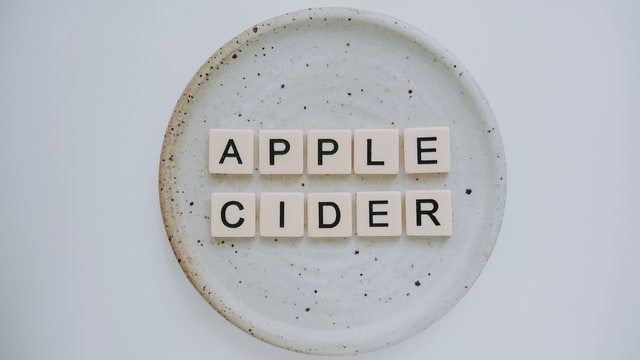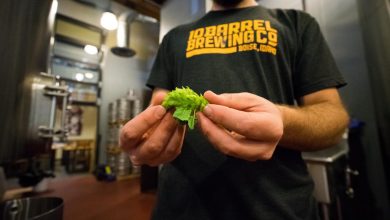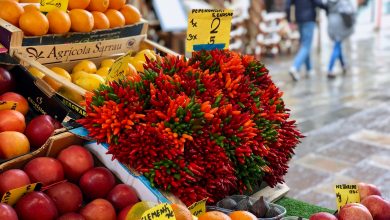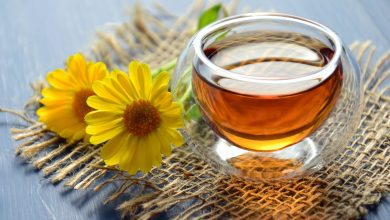How to Make Hard Cider: A Craft Cider Guide

Cider isn’t just for fall fairs and cold winter nights. We firmly believe that cider holds a place in brewing all year long, a fact proved over and over through craft cider brewers across the U.S.
The art of cider-making can be just as extensive, involved, and rewarding as crafting a great beer brew. When many consumers think about hard cider, it’s assumed that all ciders are essentially created equal; nothing could be further from the truth. Craft cider encompasses a wide variety of tastes, smells, and body characteristics unique to the brewing style and apples used.
In this article, we’ll explore what defines craft hard cider and the unique characteristics attributed to this beverage. Then, we’ll wrap everything up by teaching you how to brew your own delicious craft cider.
What Is Craft Cider?
What defines craft cider? Craft cider is all about the fresh apple juice. Similar to brewing beer, how the beverage is made plays an integral role in the quality and taste of the hard cider.
At its core, cider is comprised out of the process of fermenting fresh-pressed apple juice. This process develops a sweet, apple-intense beverage bursting with flavor in the end.
Many people new to crafting cider wonder how it differs from the warm apple beverage they often consume in the winter. Essentially, standard cider isn’t much different from apple juice, aside from the filtration process. Craft cider, however, goes through a rigorous fermentation process to produce a flavorful alcoholic beverage that’s chock-full of crisp apple flavor.

How Cider Got Its Start In the U.S.
The world history of hard cider stretches all the way back to ancient Roman times. From there, cider has made its way through the ages; the fermented apple drink was popular in 10th century England, drunk in early B.C. northern Spain, and was even used for a time as a currency type. The apple drink remains popular throughout the world, with each location being ripe with its own rich history deeply embedded in the history of making cider. Craft cider’s story in the U.S. is no different.
Cider here in the U.S. all began with Massachusetts Bay colonists in 1620 arriving and planting apple trees all throughout the newly established colony. The fermented apple beverage established roots as one of the most popular drinks during this time in the U.S. Cider was drunk regularly by adults and children, as well as turned into apple vinegar to preserve the longevity of other food items.
Through no fault of its own, cider saw a decline in popularity in the 1800s. This decline was due in part to the Industrial Revolution and, in part, to the increasing popularity of beer brewing and consumption brought in by German immigrants. While there were still small local brewers of cider, the process of craft cider brewing didn’t make a comeback until recent years.
Today, cider-making is increasingly embraced by craft brewers for the unique rich flavors that can be produced and enjoyed. Craft cider brewing taps a whole new area of the alcohol market by providing a beer-esque alternative for those who don’t enjoy traditional beer. And according to Washington State University, “today, cider is one of the fastest-growing segments of the liquor industry.”
Different Variations of Cider
Just as there are different types of beer, wine, and liquor, craft cider features its own unique variations. Here’s a look at some of the most well-known categories of craft cider:
- English Craft Cider – English ciders tend to be dry and high in alcohol content. Brewers of this category of craft cider tend to use bittersweet apple types and age the brew in oak barrels following fermentation with wild yeast. The taste of English cider errs on the side of earthy and grassy.
- Standard Craft Cider – This popular method for crafting cider generally uses crab apples. Standard or common ciders tend to feature lower alcohol content and a sweeter taste.
- Fruit Ciders – With fruit ciders, the base is comprised of fermented apple juice, and then the brewing process is finished by integrating other fruit essences and juices. Fruit ciders are often very sweet and high in alcohol content.
- New England Craft Cider – Rich sugar, honey, and molasses flavors characterize the New England craft cider category. New England craft ciders are often aged in barrels to give them a more vibrant and dynamic apple flavor.
- French Craft Cider – If you prefer drinks reminiscent of champagne, French craft cider is your choice. French craft ciders are mostly sweet and feature a lower alcohol content than most.
- Spanish Craft Cider – Spanish craft ciders are typically tart and highly acidic. For those who prefer intense, sometimes vinegar-like flavor, this cider category should hit the spot.

How to Make Your Own Craft Cider
Making your own craft cider can prove to be a pretty rewarding experience. While the crafting process for hard cider can be involved, we’ve sought to simplify the steps to ensure you have the best chances for success.
- Procure Equipment and Supplies – Before getting started with crafting your cider, it’s crucial that you procure all the equipment and supplies needed. Unfortunately, the items list for craft cider brewing can be extensive. Here’s the bare minimum list of what you’ll need for cider crafting:
- One 6.5 gallon bucket with lid for fermenting and bottling
- Apples
- Bottles
- Apple press
- Yeast nutrient to ensure your yeast is pure
- Bottle caps and bottle capper
- Siphon tube for bottling
- Brewing yeast
- Cheesecloth for straining
- Spray bottle
- Sanitizer for cleaning your equipment
- Campden tablets to prevent oxidization
- Priming sugar (optional)
- Hydrometer to measure density
- Choose Your Apples – The apples you use should be determined by the type of cider you plan to brew. For sweeter ciders, try golden delicious, Fuji, or red delicious apples. If you’re looking for more acidic or tart flavors, try pink lady or McIntosh apples. For a uniquely nuanced cider character, try using a variety of apple types.
- Press Apple Juice – Using an apple press, press your apple juice. Generally speaking, it takes about 20 pounds of apples to make one gallon of juice. It’s best to press your apple juice immediately prior to beginning the fermentation process.
- Prepare for Fermentation – To prevent unwanted flavor variations or a prominent vinegar taste from occurring in your cider, you’ll need to prepare your juice accordingly. To prepare your juice, add one Campden tablet per every gallon brewed. Allow your concoction to rest for two days inside your fermenting bucket.
- Ferment – For the apple cider fermenting process, the type of yeast you use will directly impact your cider’s flavor, so choose carefully. Cider brewers often use wine yeasts for full and dry flavors. Ale yeasts can also be used as a less-dry option. Start the fermenting process by measuring your yeast. The amount of yeast you use per gallon should be indicated per the yeast manufacturer’s instructions. Before pitching your yeast, add your yeast nutrient to one cup of boiling water, and then allow the concoction to cool to between 80-100 degrees. Add the nutrient mixture to the juice in your brew bucket. Complete the process by adding in your yeast and securely attaching the bucket’s lid. Your fermenting mixture should rest for two weeks while being maintained at a 65-75 degree temperature. Once fermentation is complete, allow the cider to rest for another three to five days.
- Strain – Following the fermentation process, you’ll need to strain your brew through a cheesecloth to remove any remaining yeast particles. You can do this by straining into a separate bucket.
- Bubbles and Bottling – At the end of fermentation, it’s time to bottle. Be sure to measure your fermented brew’s density and fermentation completion prior to bottling for optimal taste and so that your bottles don’t explode from the pressure. You’ll need to add priming sugar to each bottle before adding your cider if you want a carbonated beverage; allow the cider to sit in the bottles for an additional two weeks. If you want a flat cider, skip straight to bottling, capping, and consuming. You can also let your brew age for longer if you want a more enhanced flavor.
It’s important to keep all machinery and items used during the brewing process as clean as possible. Any bacteria present can negatively impact your yeast and cider; plus, it’s essential to your health.

For When You Don’t Want to Brew Your Own
If you’re in the mood for cider but not in the mood to brew your own, try one of these popular craft cider brands. One of them is guaranteed to hit the spot!
- Redd’s Apple Ale – This apple cider is sweet, crisp, and low on the bitterness scale. For those who are looking for a moderate alcohol flavor with a big apple taste, this beer brand is a good option.
- Aval Cider – This cider has a very smooth carbonation, loads of fruit flavor, and an unprecedented apple crispness that lovers of cider will definitely appreciate.
- Brooklyn Cider House Raw – There’s a wonderful, crisp sourness to Brooklyn Cider House Raw. This particular craft cider has a unique acidic and citrus aroma that accompanies the robust flavor of green apples.
- Anna’s Rose Cider – This wonderfully sweet and pink craft cider option just screams California, which makes sense with it being made in Santa Paula. Flavors of cranberry and crisp apples intertwine with floral notes to leave a lasting impression with all those who drink this cider.
- Shacksbury Dry Cider – This cider is fresh out of Vermont and teeming with gentle and complex bittersweet apple flavors. There’s a lot of balanced and nuanced taste to be found in Shacksbury Dry Cider.



